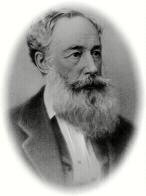Have you ever wondered why no living persons are pictured on our currency? That is because of an unfair vendetta that besmirched the integrity of one of the greatest men ever to work in the Treasury Department--Spencer Morton Clark. Clark was the first Superintendent of the Bureau of Engraving and Printing and when the need for the third issue of fractional currency came about, he was responsible to get it printed. With the approval of his superiors, Treasurer Francis Elias Spinner and Secretary of the Treasury, Hugh McCulloch, Clark’s portrait was placed on the five cent note. A public uproar ensued (of course in the media) and the government needed a scapegoat, so they said Clark did it all without permission. Representative Russell M. Thayer of Pennsylvania introduced a bill that would become “The act of April 7, 1866.” It forbade using the portrait of any living person on any currency, bond, etc. Thayer stated "No man should be immortalized on the public money of the country until the (favorable) verdict of posterity has been made upon his name." Now exactly why he had no qualms about the fact that Spinner and Fessenden (both very much alive and not yet judged by history) had their portraits on the twenty-five and fifty-cent notes is a mystery. In actuality, Clark had full permission to place his portrait on the note. He had designed the five-cent note to have Spinner’s portrait on it and McCulloch’s on the fifty-cent. But, the die with McCulloch’s portrait was lost or damaged and he refused to sit to have a new one done. Clark then moved Spinner to the fifty-cent note and being pressed for time asked Spinner “whose head shall we place on the five-cent? The boys have a die with my head on it.” Spinner being busy, probably just waved him off and that was the permission needed. Clark was a very faithful employee of the department and would have never placed the blame on Spinner and allowed himself to become the convenient scapegoat. At one time he had given up a bribe equivalent to over one million dollars in today’s money to just quit his job and move to NYC. He refused and then underwent great hatred by many printing unions, printing companies, etc. That is the true story. You will hear many other stories that refute this, but always remember—Clark was INNOCENT!
- Benny Bolin's blog
- Log in or register to post comments


